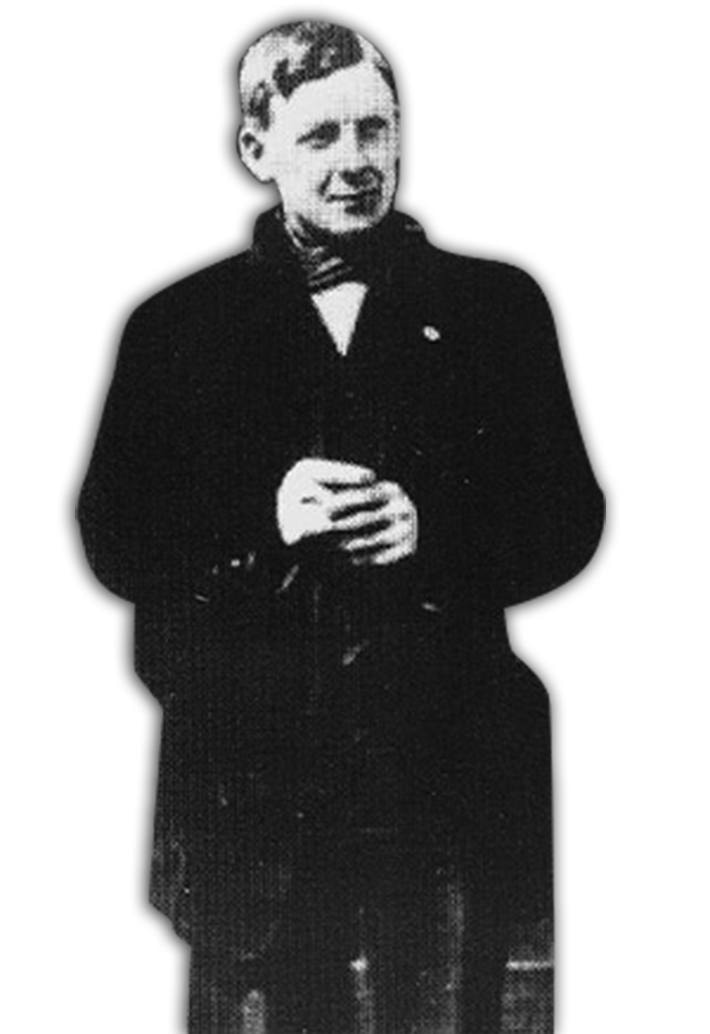There is a forested slope just outside of Cumberland, a few hours north of Victoria called Mount Ginger Goodwin. It’s named after Albert (Ginger) Goodwin, a Kootenay migrant coal miner, labour activist and draft dodger who was shot to death near there on July 27, 1918.
The three constables who found themselves responsible for the corpse that night, nearly a century ago, were in a bit of a predicament. They were afraid of what would happen when news of the death inevitably reached the nearby community.
They knew there would be repercussions for their actions, and possibly an investigation, but they couldn’t find a local undertaker who would agree to help them deal with the body. Finally one of the constables was sent out to retrieve the coroner from Nanaimo.
“Basically, they knew if they came down on the wrong side of this, they were in trouble,” writer Matt Rader told {Vurb} while he walked along the Courtenay shore of Comox Lake.
Many people believed at the time, and still do, that Goodwin was drafted into the army (an earlier exemption had been reconsidered) and ultimately executed to stifle his attempts to introduce collective bargaining to the work place. He had become famous for representing the workers of the Trail smelter and noisily decrying the slave-like working conditions, low wages and pollution.
“Goodwin was always the talker. He was the one writing editorials and giving speeches,” said Rader. “What was driving me was this: who tells the story when you kill the storyteller?”
The current answer is Rader himself. His collection What I Want to Tell Goes Like This was released earlier this month by Nightwood Editions. His stories chronicle both the historical and contemporary life of Cumberland and the surrounding area, the place where Goodwin fled to and ultimately died.
 The contemporary component of Rader’s book includes a story, first published in the Malahat Review in September 2011, called “At The Lake”. The story recounts a sexual encounter involving three teenagers, two male and one female. Rader said he imagined the event happening on the opposite side of the lake from Goodwin’s murder site.
The contemporary component of Rader’s book includes a story, first published in the Malahat Review in September 2011, called “At The Lake”. The story recounts a sexual encounter involving three teenagers, two male and one female. Rader said he imagined the event happening on the opposite side of the lake from Goodwin’s murder site.
“Basically on one side of the lake you’ve got these three guys standing around Goodwin’s body, and they don’t know how to feel about what they’ve done. Then, on the other side of the water, a hundred years later, you have three young people in a parallel ethical quandary,” he said.
Recently, Rader took home the Jack Hodgins’ Founder’s Award for fiction, for his story “All This Was a Long Time Ago”. The story focuses primarily on the life of James Joyce, but an accompanying plot follows a Vancouver Island teacher in the midst of marital issues during the present day. As you read the two narratives side by side, similarities begin to make themselves apparent.
Rader resurrects a number of historical characters in his book, and mined his surrounding landscape for inspiration. He drove Vurb down to the Royston wrecks, a line of scuttled ships piled together to make a breakwater. Their rusted hulls still jut out from the water a few hundred feet from shore. Rader used them as a backdrop in his story “The Laurel Whalen”. Then he swung by the scene of another historic shooting, this one involving pirates, that he used for inspiration for his story “The Selected Kid Curry”.
While driving through downtown Cumberland Rader described the town’s conditions during the so-called Great Strike that lasted from 1912 until 1914, pointing out where cannons had once been stationed on street corners.
Often, while researching through archives and libraries, he picked up anecdotes and idiosyncrasies about historical life that worked their way into his fiction.
“I did some reading about this,” Rader said. “They used to drill bore holes for the mines, right? And those eventually became ponds, but the gas content meant you could set them on fire. There’s these old timers who talk about how they used to light the water on fire when they were boys.”
When asked whether the story was true or not, Rader said he intentionally left the distinction unclear.
“One thing I’ve discovered is lots and lots of people don’t have any idea about history. My book isn’t intended to be accurate. My book is trying to say that these stories, and these elements from our past, constitute what our present is. Through telling them, we can see ourselves.”
For more information about What I Want to Tell Goes Like This, visit nightwoodeditions.com or mattrader.com.
EXCERPT
Goodwin’s death
“High summer, 1918. Vancouver Island. The sun weeps fiery light through the canopy onto the forest floor. See the man face down in the dirt. Red hair. Starved slender so his dungarees hang loosely off his thighs and hips. A red bandana tied neatly around his neck. Ammunition boots, battered and ripped at the toe cap, the soles flapping open at the heel. Nothing moves except the fleas of his skin. One hand stretches above his head. The other, splayed to his right, grips a small rifle. The jungle empty now of birds. Blood spreads across his back into his linen shirt and from his outstretched hand into the fir needles and earth.”
— “Alone Mountain” by Matt Rader

